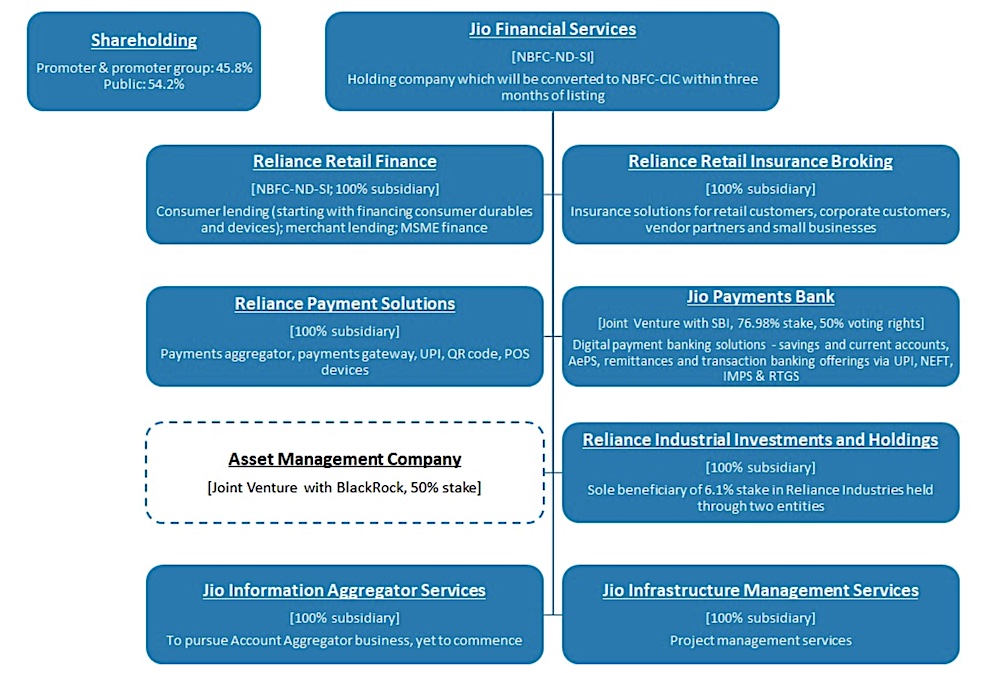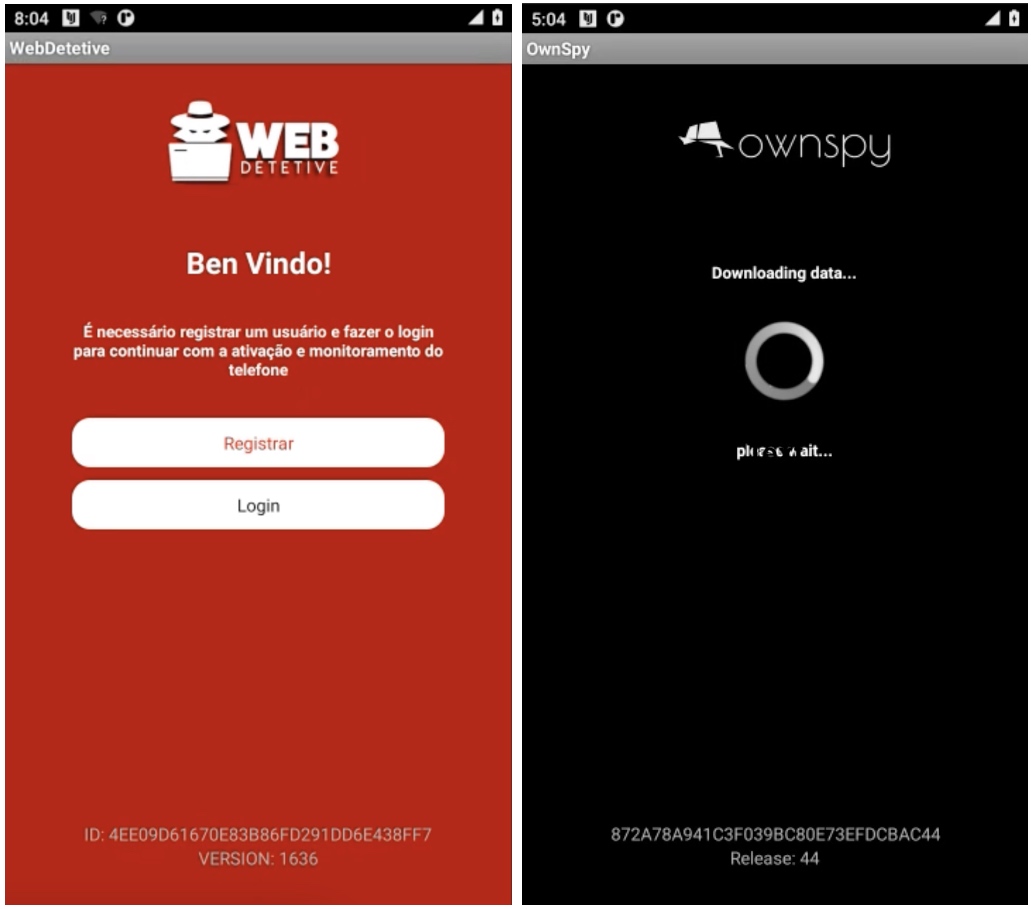from https://ift.tt/5xe9OK8
via Technews

The success of any piece of visual communication depends on colour. Research into the impact of colour in marketing tells us that it takes the average person just 90 seconds

If you've been hard at work in your spare time creating stunning paper art or impressive poster designs, selling your merchandise online can be a quick way to...

Originally designed in 1974 and launched internationally in 1980, Rubik's Cube is a design classic that's sold by the hundreds of millions. Over the years, it...

Your design portfolio is one of your most useful tools. It can win you commissions, help you snag a new design job, attract collaborators, and get your work in...

Editorial design can be a daunting task for someone who isn’t used to formatting large amounts of text. The skills you'll need are different to those of...
Amazon is increasing its free shipping minimum to $35 for customers who don’t have a Prime membership in some regions, the company confirmed to TechCrunch on Monday. Up until now, the free shipping minimum was $25. Amazon says it’s testing the new free shipping threshold randomly by zip code-grouped regions and that everyone in the same region will see the same free shipping threshold. The news was first reported by CNBC.
“We continually evaluate our offerings and make adjustments based on those assessments,” an Amazon spokesperson told TechCrunch in an email. “We’re currently testing a $35 minimum for non-Prime customers to qualify for free shipping. Prime members continue to enjoy free delivery on over 300 million items, with tens of millions of items available for free Same or One-Day Delivery.”
The company is looking to push more customers towards it Prime offering with this new change. The change does not impact Prime members, who pay $139 annually or $15 per month for free shipping and other membership perks.
It’s worth noting that this isn’t the first time that Amazon has changed its free shipping threshold, as it increased the minimum to $49 from $35 back in 2016, and then brought it back to $35 in 2017. The company later dropped the price point to $25 to undercut Walmart, which has a $35 free shipping minimum for customers who aren’t subscribed to Walmart+. The new change brings Amazon in-line with Walmart’s offering.
By increasing the free shipping threshold, it seems that the company is attempting to cut costs, which is something Amazon has been looking to do across its business.
Amazon cut 27,000 jobs this year and froze corporate hiring. The company also started charging delivery fees for Fresh grocery orders that are under $150, removing a perk that gave Prime members free delivery on orders over $35. In addition, Amazon ended AmazonSmile, which was a donation program that redirects 0.5% of the cost of all eligible products toward charities.
With the explosion of e-commerce during the global pandemic, companies not only had to adopt Amazon-like shipping skills, but also how to coordinate and manage returns.
In Latin America, the reverse logistics process “is a mess,” according to Agustin Shutte, founder and CEO of Devolut, which provides an end-to-end returns solution for e-commerce sellers.
“It’s dominated by traditional carriers who are not reliable, are super expensive and take forever to take the product back to the merchant,” Shutte told TechCrunch. “This leads to refunds taking 40 to 50 days. Developing a network of return points, like Happy Returns did in the U.S., is something completely unique that no one is doing.”
He started the Mexico-based company earlier this year with Emiliano Monge. This is their second startup together, having previously founded another logistics startup where they saw firsthand how inefficient the return process was.
Devolut is still very much in its early stages, having launched just three months ago. However, the company is already working with 20 B2B clients across three countries.
Taking a nod from Happy Returns, Devolut enables sellers a returns option that doesn’t require boxes or labels through a network of what will be “city points,” where those who want to return merchandise can go, for example, a pharmacy or convenience store.
Along with that is software that fully automates the process and technology that assesses item conditions upon receipt. Buyers get a QR code that will be scanned by the clerk at the city point who then puts the item in a plastic bag, scans a preprinted return label and puts the item inside reusable bins, Shutte explained. In most cases, Devolut will be able to provide instant refunds and save merchants up to 50% in returns management costs.

Devolut’s returns dashboard. Image Credits: Devolut
While it is focused on returns, the company is also using AI to promote exchanges instead of refunds so that merchants can retain more revenue, Shutte said. Devolut plans to make money from a monthly software charge for the merchant, a per return charge for managing the process and charging a percentage for any upsells or cross selling.
One of the unique things is that Devolut essentially has government backing for its developing a returns ecosystem. Shutte said some countries, including Mexico, Brazil, Argentina and Colombia, have recently passed laws forcing merchants to take returns from online purchases.
“More importantly than that, is that Amazon and MercadoLibre are setting a new bar in terms of post-purchase experience,” he added. “Just like same- or next-day delivery changed the game in LatAm, now they expect the same experience from every direct-to-consumer brand. Whether the merchants like it or not, returns in LatAm are increasing, and clients are demanding a much better experience. Maybe even more relevant is the fact that it’s been widely proven that a good return experience generates up to 30% in revenues, so the ROI on a solution like ours is 50x to 60x.”
There are some other startups working on this reverse logistics problem, for example, Rever, Loop Returns, ReturnLogic, Seel and Sendcloud. However, Shutte said Devolut’s closest competitor is Reversso, a Chilean company providing each customer a custom portal to manage returns. The main differentiator, according to Shutte, being that Reversso is focused on software rather than an end-to-end solution, while Devolut will have that network of return points.
Today, the company announced that it raised $600,000 in pre-seed funding. Investors in the round include Seedstars International Ventures, FJ Labs, Far Out Ventures, Pareto 20 and Forum Ventures.
Devolut intends to further develop its AI-powered returns and exchange algorithms that generate product recommendations and instant returns, eventually for refunds via its own digital wallet. It is also testing its tool with Sally Beauty’s 240 stores in Mexico.
“Latin America is a region where commerce is growing the most, so we see our solution coming as the next wave: first it was digital payments, second, same-day delivery and now the third wave is post-purchase,” Shutte said. “We see how big the market could become. In the U.S., people buy around 50 to 60 purchases per year, however, in LatAm it is two per year. That could grow 7x compared to today, so that is an enabler to grow.”
Jio Financial Services, the financial services unit of Mukesh Ambani-run Indian conglomerate Reliance Industries, plans to expand to merchant lending and insurance, Ambani said at Reliance’s annual general meeting in a speech that is likely to have a repercussions for countless startups.
“JFS will massively increase financial services penetration by transforming and modernising them with a digital-first approach that simplifies financial products, reduces cost of service, and expands reach to every citizen through easily accessible digital channels,” he said.
“For tens of thousands of SMEs, merchants, and self-employed entrepreneurs, ease of doing business must mean ease in borrowing, investments, and payment solutions. JFS plans to democratise financial services for 1.42 billion Indians, giving them access to simple, affordable, innovative, and intuitive products and services.”
TechCrunch reported last week that Reliance was testing a sound box payment system at its campus. Analysts believe that the real allure of the sound box extends beyond its auditory alerts — it provides invaluable insights into merchant behaviors, facilitating the offering of loans based on this data.
The company will also enter the insurance segment, offering “simple, yet smart life, general and health insurance products through a seamless digital interface.” Jio Financial Services will explore partnerships with global players, he said.
“It will use predictive data analytics to co-create contextual products with partners and cater to customer requirements in a truly unique way,” he said.
Ambani’s comments offer peek into the strategic trajectory of Jio Financial Services, mere days subsequent to the lackluster inauguration of the financial entity onto the public market. Reliance’s discussion about the future plans of Jio Financial Services has been somewhat limited so far, except for its earlier announcement of a joint venture with BlackRock.

Jio Financial Services company structure (Image: Morgan Stanley)
Jio Financial Services owns 6.1% in Reliance. Ambani said JFS operates in a sector that is very capital intensive, and Reliance has made it one of the “world’s highest capitalised financial service platforms at inception.”
“There is unprecedented opportunity to transform the asset management industry by introducing a full-service tech-enabled asset manager with affordable and transparent investment products to meet the needs of every segment of society,” said Larry Fink, Chairman and chief executive of BlackRock, at Reliance’s event on Monday.
Jio Financial Services will also explore blockchain-based platforms and participation in central bank digital currency, he said.
Ambani added:
I have three reasons to be absolutely confident about JFS achieving tremendous success over the next few years.
1. The digital-first architecture of JFS will give it an unmatched head start to reach millions of Indians.
2. This is a highly capital-intensive business. Your Company has provided JFS with a strong capital foundation to build a best-in-class, trusted financial services enterprise and achieve rapid growth. Reliance has capitalised JFS with a net worth of Rs 1,20,000 crore to create one of the world’s highest capitalised financial service platforms at inception.
3. JFS is blessed with a very strong board, led by Shri K.V. Kamath, a veteran and most respected banker. A highly motivated leadership team is being built with a combination of financial industry experts and young leaders who are eager to take on big challenges.
Reliance Industries said Monday it has appointed the three children of billionaire Mukesh Ambani — Isha Ambani, Akash Ambani and Anant Ambani — to its board, the latest in the succession plan at the country’s largest company, which operates the nation’s largest telecom operator and retail chain.
Nita, Ambani’s wife, has resigned from the board, said the $202 billion oil-to-retail giant in a statement, published on the local stock exchange.
The early signs of the succession planning has been apparent in recent years with 66-year-old Ambani promoting his children to lead many of the empire’s businesses. Akash leads the digital business, Jio Platforms, whereas his twin sister Isha helms Reliance Retail. Anant leads the new energy business.
“Isha Ambani, Akash Ambani and Anant Ambani have been closely involved with and are leading and managing key businesses of RIL over the last few years including retail, digital services and energy and materials businesses,” the company said in a statement.
“They also serve on the boards of the key subsidiaries of RIL. Their appointment to the Board of RIL will enable RIL to gain from their insights and infuse new ideas, the Board opined.”
Bluesky introduced a bunch of updates on Friday to its mobile apps and website including a new tab to see your own likes, notification support for apps, and an emoji picker for the web composer.
Earlier this month, Bluesky’s rival Threads added a new tab in settings, called “Your Likes,” to let users look at their own liked posts. In contrast, Bluesky has added a “Likes” tab to users’ profiles. The placement of the tab is similar to X (formerly Twitter), but unlike the Elon Musk-owned social network, Bluesky doesn’t let you see liked posts of other people.

Bluesky has added a new likes tab
The platform specified in a post that the likes of a user can be accessed through the API as they are public. While the native client doesn’t show them, other apps can choose to include functionality to display the likes of other users.
Additionally, the social network has also added the ability to suggest people to mention when someone types an “@” in the composer. This update is available across platforms. In another composer-related enhancement, Bluesky has added an emoji picker on the web. In its latest update, Bluesky is also adding notifications to its mobile apps.
Earlier this week, Bluesky added rate limits to actions like resetting passwords or updating the user handle to stabilize network traffic. The social media company took this action, as last week after Musk announced that X would be removing the “block” feature, Bluesky briefly failed to handle the load of the new traffic on the site.
Chinese electric vehicle upstart Xpeng is acquiring the smart EV assets of ride hailing giant Didi for $744 million, marking another significant alliance that the Tesla challenger has struck in recent months.
In an announcement on Monday, Didi said the duo is forming a strategic partnership to “promote the global application of smart electric vehicles and technologies.”
Notably, the Didi assets will become a new sub-brand called “Mona” under Xpeng, which is scheduled to launch in 2024. The partnership also extends to areas including marketing, financial insurance services, charging and international expansion.
The news followed on the heels of Volkswagen’s $700 million investment in Xpeng which would see the production of two new models under the Volkswagen brand utilizing XPeng’s key ADAS technologies.
More to come — this is a developing story…
The Station is a weekly newsletter dedicated to all things transportation. Sign up here — just click The Station — to receive the newsletter every weekend in your inbox. Subscribe for free.
Welcome back to The Station, your central hub for all past, present and future means of moving people and packages from Point A to Point B.
We have a lot to cover so let’s jump in. But wait! One note to share: These days, I’m a semi-regular guest on TechCrunch’s Equity Podcast, including an episode that aired Friday that covers robotaxis, Nvidia’s earning, plus Better.com and startups that are full of shit (you’ll get the joke if you listen).
Vamos.
Want to reach out with a tip, comment or complaint? Email Kirsten at kirsten.korosec@techcrunch.com.
Reminder that you can drop us a note at tips@techcrunch.com. If you prefer to remain anonymous, click here to contact us, which includes SecureDrop (instructions here) and various encrypted messaging apps.
The battery business keeps attracting capital.
Just take a look at Swedish lithium-ion battery producer Northvolt. The company raised around $1.2 billion in a convertible notes from BlackRock and various Canadian pension plans. Participants in the round included Goldman Sachs, Volkswagen, Baillie Gifford, Swedbank Robur, Singapore’s GIC and Hong Kong-based Chow Tai Fook Enterprises.
That cash will be used to build new factories in North America and Europe.
Northvolt has been on a bit of tear the past few years — even before the big battery boom really took off. The company has raised $9 billion in debt and equity since 2017, including $1.1 billion in convertible notes last year. The company has also secured more than $55 billion in orders from customers like BMW, Fluence, Scania, Volvo and Volkswagen.
The Northvolt deal gives me another chance to plug a collection of articles we put together earlier this month on the one-year anniversary of the Inflation Reduction Act, including a look at how startups have benefited and a map that tracks all the battery factories in North America. Once Northvolt picks a location for this next factory, we’ll update the map.
Other deals that caught my attention …
Accure, a startup that uses AI to predict lithium-ion battery failures, raised $7.8 million in a Series A2 round led by Blue Bear Capital and HSBC Asset Management with participation from Riverstone Holdings and Capnamic Ventures.
Channel19, a startup that developed software for refrigerated trucking companies, raised $2.7 million in pre-seed and seed funding round led by Augment Ventures with participation by Accion Venture Lab, TMV, Overton Venture Capital and Refashiond Ventures. Several Silicon Valley and freight tech industry angels also participated, according to the company.
Electric Era, a startup founded by former SpaceX engineers that developed software and hardware to make EV charging stations faster and more reliable, raised $11.5 million in a Series A round led by HSBC’s asset management arm. Climate-tech fund Blackhorn, lithium-mining giant SQM and mobility-focused investor Proeza also participated.
NaaS Technology Inc., an EV charging service company in China, said it plans to acquire Charge Amps AB in a deal valued at $66.4 million.
Nickelytics, an advertising tech startup focused on rideshare, has been acquired by Texas-based venture capital group T72 Club Inc. Terms were not disclosed.
Zeekr, the Chinese EV maker under Geely Holdings, is kicking off its roadshow with investors ahead of its initial public offering, Reuters reported citing unnamed sources. Zeekr’s aim is a share sale that will push its valuation over $13 billion. Zeekr filed confidentially for an IPO back in December and raised $750 million in February. If Zeekr is successful and actually lists, this could be one of the largest Chinese IPOs in the past two years.
Chinese companies listing on U.S. exchanges haven’t had the smoothest of rides. Didi, which raised $4.4 billion in its June 2021 IPO, ran up against Chinese regulators. The company delisted later that year. A few other Chinese companies, including Hesai are dipping their toes back in the U.S. IPO waters now that there is more regulatory clarity in both countries. Last year, the U.S. and China struck a deal that allows American officials to review audit documents of Chinese businesses that trade in the United States, an agreement expected to lower the likelihood of Chinese companies on U.S. exchanges delisting.
Polestar plans to make Mobileye’s hands-off, eyes-off automated driving technology (called Chauffeur) available to owners of the upcoming Polestar 4 electric SUV coupe. The vehicle, which launched in China and will hit global markets in 2024, comes standard with Mobileye’s SuperVision advanced driver assistance system. Polestar plans to add Chauffeur at a later date, but did not specify when.
Tesla shareholders who sued the company for financial losses stemming from Elon Musk’s “funding secured” tweet in 2018 are set to receive compensation now that the case has been settled. The SEC said 3,350 eligible claimants will share in the $42.3 million payout.
Speaking of Tesla, CEO Elon Musk livestreamed a test drive of FSD Beta v12 — a yet-to-be-released version of its automated driving software (the video has since been posted on YouTube by a number of people). To be clear, this is not a self-driving car; it is ADAS that requires a human to be ready to intervene at any time. The 40-minute video showed the vehicle handling roundabouts and intersections and even some construction. At about the 19-minute mark Musk had to intervene and take control of the vehicle when it misread the traffic signal and tried to go through a busy intersection at the wrong time.
Baidu expanded its Apollo Go driverless ride-hailing service to cover trips to and from Wuhan Tianhe International Airport. The company now operates Apollo Go robotaxis in five cities in China.
Beep has partnered with self-driving software company Oxa (previously known as Oxbotica) to deploy autonomous vehicles in the United States.
Jaguar Land Rover has found a use for its second-life Jaguar I-Pace batteries.
The National Highway Traffic Safety Administration is investigating whether Ford‘s 2022 recall of nearly 49,000 Mustang Mach-E electric vehicles sufficiently addressed issues and whether more vehicles should be included in the recall.
Uber is blaming high insurance rates for its decision to raise the minimum age requirement for new drivers in California to 25 years old. There are some caveats though.
General Motors’ Ultium Cells, the joint venture with LG Energy Solutions, reached an agreement with the United Auto Workers to increase pay for workers at its Ohio battery factory by an average of 25%.
Wu Xinzhou, the former vice president of autonomous driving at Chinese electric vehicle maker Xpeng, posted on social media site Weibo that he’s taken a job at Nvidia.
Vroom vroom! TechCrunch Disrupt 2023, taking place in San Francisco on September 19–21, is where you’ll get the inside scoop on the future of mobility. Come and hear from today’s leading mobility entrepreneurs on what it takes to build and innovate for a more sustainable future. Save up to $400 when you buy your pass now through September 18, and save 15% on top of that with promo code STATION. Learn more.
When investors look at a startup slide deck, they are looking for something very specific. Yes, they want to know if the team is great and the market is huge and the problem is worth solving and the solution makes sense. Of course. But another thing they are looking for is whether the founders understand the journey they are on.
If you step on the VC treadmill, you’re signing up for rapid, explosive growth. You have to: If you don’t, you don’t fit into the models of how VC works. And that’s OK — not every company is suitable for VC funding.
The other truth is that your funding amount includes a very literal deadline: If you run out of money, that’s the end of your company. So, before you run out of money, one of three things needs to happen:
For early-stage companies, the first two options are off the table, which means you need to paint a compelling picture for another round of funding. That’s where startups often fall down. Here’s how to fix that.

This slide has two Texas-sized red flags. Can you tell what they are? Also: Yeah, I “designed” this slide. This is why I’m getting some help for the how it should be done example below. Image Credits: Haje Kamps/TechCrunch+
What’s the hardest part of reading? More often than not, it’s picking a good book. “L’embarras du choix,” as we say in French: Presented with infinite options, it becomes very hard to make a decision. That’s why recommendations are so helpful.
And who’s best placed to recommend books than people who, you know, write books? With this in mind, TechCrunch+ contacted a handful of authors whose work is closely tied to tech and startups. We asked them a simple question: “What book have you read this summer that you think others might enjoy?”
We heard back from:
From fiction to practical guides, from very recent books to a century-old one, here are their picks.
The responses have been lightly edited for length and clarity.
After a recent book explaining why generic marketing approaches don’t work on software developers, developer marketer Adam DuVander is now back with “Technical Content Strategy Decoded,” a more actionable follow-on explaining what companies should and shouldn’t do.
Book recommendation: “The War of Art: Break Through the Blocks and Win Your Inner Creative Battles,” by Steven Pressfield
I re-read “The War of Art” this summer. Again. I return to this book because it describes the life of anyone creating anything — and that is most of us. Our greatest obstacle is not ourselves. Pressfield gives us a scapegoat in resistance and a game plan to transcend its grasp.
Phil Rosen is a journalist and the author of two books, “Everywhere But Home: Life Overseas as Told by a Travel Blogger” and “Life Between Moments: New York Stories,” a collection of 12 short stories about the Big Apple.
Book recommendation: “Forever: A Novel,” by Pete Hamill
This is a brilliant novel about an immigrant from Ireland who arrives to New York in the 1700s, and is quickly granted immortality under one condition: He can never leave Manhattan.
It’s a beautiful, tragic story that’s effectively a history of Manhattan through one man’s eyes, and it’s similar to “Forrest Gump” in that he’s always in the right place at the right time through historical events.
Welcome back to The Interchange, where we take a look at the hottest fintech news of the previous week. Better.com finally went public last week, and the stock’s performance was worse than expected. Affirm, on the other hand, saw its shares get a boost on the back of a better-than-expected earnings report. There was also a mega-raise, and an acquisition too. On another note, if you want to receive The Interchange directly in your inbox every Sunday, head here to sign up!
The biggest fintech news of the week centered around Better.com’s no good, very bad public market debut. Or as my friend and colleague Alex Wilhelm described it, Better.com had a Miserable.com week.
To sum it up, digital mortgage lender Better.com made its public debut on August 24. To no one’s surprise, the stock wasn’t exactly a hit with public investors. In fact, it was a resounding bomb. As of Friday, August 25, the stock had closed a mere $1.19. Shares of SPAC partner, Aurora, were trading at $17.45 on Wednesday, before Better.com officially went public. This is a company that two years ago had planned to go public at a $7.7 billion valuation.
Now, we knew Better.com’s stock wouldn’t exactly perform well. But I’m not sure anyone expected it to be hovering at a share price that gave Better.com a market cap of just $19.14 million.
I had the opportunity to interview Vishal Garg, Better.com CEO and co-founder, a couple weeks ago in anticipation of the company’s going public via a SPAC merger with Aurora Acquisition Corp. I will tell you that after nearly two years of writing about the company’s multiple (and mostly botched) layoffs, all the various ways that Garg has managed to piss off former employees and execs alike, and the company’s swing from a big profit in 2020 to heavy losses in 2022 and beyond, I expected the interview to be a little awkward. The last time I had interviewed Garg was in 2020, when everyone and their brother was refinancing their homes and Better.com was raking in the cash. In the end, Garg was on his best behavior — exhibiting the charm and charisma that no doubt managed to help win over investors such as SoftBank, Activant Capital, Ping An Global Voyager Fund, Ally Financial and Citi, and others who collectively invested hundreds of millions of dollars in the company.
Some highlights of the interview included the following:
On that note, on the same day that Better.com went public, the average 30-year mortgage rate jumped to 7.23%, marking a 22-year high, according to Yahoo Finance. With rates this high, Better.com’s attempt to turn its business around will be even more challenging.
Phil Haslett, co-founder and chief strategy officer of EquityZen, had this to say about the company’s choosing to move forward with its delayed SPAC despite all the negative headlines over the past 20 months. Via email, he wrote: “Senior leadership at Better.com (and its investors) are not surprised the stock is ‘down’ 90%. The de-SPAC was a way to raise $565M. Nobody else was going to give them $500 million. Vishal Garg saw that there was one last wedding dress for sale, and he took it. He knew it wouldn’t fit right, but he didn’t care. He got it done.”
To hear the Equity podcast team riff more about the company and its bomb of a public debut, check out the below link. — Mary Ann

Image Credits: Better.com
Better.com may have had a rough week, but at least one other publicly traded fintech company’s stock fared far better.
Shares of Affirm’s stock were trading up nearly 30% to just under $18 on Friday afternoon after the company released its fourth-quarter and fiscal year 2023 earnings. The company said it was exiting the year with achieving profitability on an adjusted operating income (AOI) basis and that its revenue was up 22% year-over-year to $446 million. And, as reported by CNBC, Affirm “also gave strong guidance for the fiscal first quarter, projecting $430 million to $455 million in revenue, versus analyst expectations of $430 million.”
Third Bridge analyst Kevin Kennedy had a few thoughts on the results after interviewing a number of execs in the fintech space, telling TechCrunch that “even with generally positive results, it is hard to ignore Affirm’s continued operating losses and loss margins expanded more than 11 percentage points over the past year, resulting in a $2.6 billion accumulated deficit.” On the plus side, Kennedy also noted that the Debit+ card product was “a step in the right direction, and will likely play a key role in the path to profitability by driving better monetization of existing users without the drag of marginal customer acquisition costs.” He said he was also particularly interested to see Affirm’s increased adoption in travel, equipment and auto industries. Lastly, he said: “Our experts believe Affirm’s future as a standalone business will be contingent on the company’s ability to develop and effectively cross-sell a wider spectrum of financial services products, as the BNPL offerings of major diversified tech players like PayPal, Apple and Cash App (Block) are becoming increasingly competitive.”
For context, Affirm’s stock is still trading lower than its 52-week-high of $27.26, but it’s more than double its 52-week-low of $8.62.
Check out our previous interview with the company’s CTO here. — Mary Ann
Sarah Perez reports on a new way for Starbucks lovers to pay for their favorite beverages, sans phone. The contactless checkout method comes as the coffee giant works to move people through the drive-through quicker. Find out how it works.
From Manish Singh are two stories on India retail giant Reliance Retail. First up, the company’s spinoff unit, Jio Financial Services, made its public debut. Second, Reliance is testing a sound box payment system that instantly validates and announces when a payment was successful. Learn more.
And this week on Equity, Mary Ann dug into Latin America’s fintech and AI scene with Mercedes Bent, partner on the early-stage team at Lightspeed Ventures and co-lead of Lightspeed’s LatAm region and angel fund. They spoke on a number of topics, including how and why Mercedes started investing in Latin America, and why she thinks the region is more resilient than others; why we’re early in the hype cycle when it comes to the intersection of AI and fintech; and why generative AI and fintech aren’t always the best combination.
Other items we are reading:
Klarna boasts expansion and growth across Europe as smaller firms ‘dial back’ commitments. Speaking of Klarna, CEO Sebastian Siemiatkowski posted an engaging thread on X, detailing the challenges of “trying to hire and manage somebody that does something that you have no clue how to do.”
How fintech company Marqeta is using AI to help consumers
Hadley launches mobile app to increase access to savings plans
Look who’s partnering now:
OZ Câmbio partners with Nium to improve Brazilian SME market and encourage international expansion
Treasury Prime partners with Liberty Bank
Cross River Bank and Current launch credit-building product
Engagement banking fintech Backbase partners with SavvyMoney
As seen on TechCrunch
Fintech startup Ramp raises $300M at a 28% lower valuation of $5.8B
Moniepoint cleared to acquire Kenyan fintech Kopo Kopo
This venture-backed startup has quietly bought more than 80 mom-and-pop shops
And elsewhere
Yahoo acquires social investing platform Commonstock (Disclosure: Yahoo is TechCrunch’s parent company)
LemFi raises $33M Series A to ease remittance for immigrants
Koverly raises $7.6M for B2B BNPL
Why Ventura Capital and Peter Thiel are backing this Silicon Valley RIA
Check out the Fintech Stage at TechCrunch Disrupt 2023, taking place in San Francisco on September 19–21, where we cover web3, banking, and more. Last-minute passes are still available. Save 15% with code INTERCHANGE. Register now!

Image Credits: Bryce Durbin
A Portuguese-language spyware called WebDetetive has been used to compromise more than 76,000 Android phones in recent years across South America, largely in Brazil. WebDetetive is also the latest phone spyware company in recent months to have been hacked.
In an undated note seen by TechCrunch, the unnamed hackers described how they found and exploited several security vulnerabilities that allowed them to compromise WebDetetive’s servers and access to its user databases. By exploiting other flaws in the spyware maker’s web dashboard — used by abusers to access the stolen phone data of their victims — the hackers said they enumerated and downloaded every dashboard record, including every customer’s email address.
The hackers said that dashboard access also allowed them to delete victim devices from the spyware network altogether, effectively severing the connection at the server level to prevent the device from uploading new data. “Which we definitely did. Because we could. Because #fuckstalkerware,” the hackers wrote in the note.
The note was included in a cache containing more than 1.5 gigabytes of data scraped from the spyware’s web dashboard. That data included information about each customer, such as the IP address they logged in from, and purchase history. The data also listed every device that each customer had compromised, which version of the spyware the phone was running, and the types of data that the spyware was collecting from the victim’s phone.
The cache did not include the stolen contents from victims’ phones.
DDoSecrets, a nonprofit transparency collective that indexes leaked and exposed datasets in the public interest, received the WebDetetive data and shared it with TechCrunch for analysis.
In total, the data showed that WebDetetive had compromised 76,794 devices to date at the time of the breach. The data also contained 74,336 unique customer email addresses, though WebDetetive does not verify a customer’s email addresses when signing up, preventing any meaningful analysis of the spyware’s customers.
It’s not known who is behind the WebDetetive breach and the hackers did not provide contact information. TechCrunch could not independently confirm the hackers’ claim that it deleted victims’ devices from the network, though TechCrunch did verify the authenticity of the stolen data by matching a selection of device identifiers in the cache against a publicly accessible endpoint on WebDetetive’s server.
WebDetetive is a type of phone monitoring app that is planted on a person’s phone without their consent, often by someone with knowledge of the phone’s passcode.
Once planted, the app changes its icon on the phone’s home screen, making the spyware difficult to detect and remove. WebDetetive then immediately begins stealthily uploading the contents of a person’s phone to its servers, including their messages, call logs, phone call recordings, photos, ambient recordings from the phone’s microphone, social media apps, and real-time precise location data.
Despite the broad access that these so-called “stalkerware” (or spouseware) apps have to a victim’s personal and sensitive phone data, spyware is notoriously buggy and known for their shoddy coding, which puts victims’ already-stolen data at risk of further compromise.
Little is known about WebDetetive beyond its surveillance capabilities. It’s not uncommon for spyware makers to conceal or obfuscate their real-world identities, given the reputational and legal risks that come with producing spyware and facilitating the illegal surveillance of others. WebDetetive is no different. Its website does not list who owns or operates WebDetetive.
But while the breached data itself reveals few clues about WebDetetive’s administrators, much of its roots can be traced back to OwnSpy, another widely used phone spying app.
TechCrunch downloaded the WebDetetive Android app from its website (since both Apple and Google ban stalkerware apps from their app stores), and planted the app onto a virtual device, allowing us to analyze the app in an isolated sandbox without giving it any real data, such as our location. We ran a network traffic analysis to understand what data was flowing in and out of the WebDetetive app, which found it was a largely repackaged copy of OwnSpy’s spyware. WebDetetive’s user agent, which it sends to the server to identify itself, was still referring to itself as OwnSpy, even though it was uploading our virtual device’s dummy data to WebDetetive’s servers.

A side-by-side photo comparison of WebDetetive (left) and OwnSpy (right) running on Android. Image Credits: TechCrunch
OwnSpy is developed in Spain by Mobile Innovations, a Madrid-based company run by Antonio Calatrava. OwnSpy has operated since at least 2010, according to its website, and claims to have 50,000 customers, though it’s not known how many devices OwnSpy has compromised to date.
OwnSpy also operates an affiliate model, allowing others to make a commission by promoting the app or offering “a new product to your clients” in return for OwnSpy taking a cut of the profits, according to an archived copy of its affiliates website. It’s not clear what other operational links, if any, exist between OwnSpy and WebDetetive. Calatrava did not return a request for comment or provide contact information for WebDetetive’s administrators.
A short time after we emailed Calatrava, portions of OwnSpy’s known infrastructure dropped offline. A separate network traffic analysis of OwnSpy’s app by TechCrunch found that OwnSpy’s spyware app was no longer functioning. WebDetetive’s app continues to function.
WebDetetive is the second spyware maker to be targeted by a data-destructive hack in recent months. LetMeSpy, a spyware app developed by Polish developer Rafal Lidwin, shut down following a hack that exposed and deleted victims’ stolen phone data from LetMeSpy’s servers. Lidwin declined to answer questions about the incident.
By TechCrunch’s count, at least a dozen spyware companies in recent years have exposed, spilled, or otherwise put victims’ stolen phone data at risk of further compromise because of shoddy coding and easily exploitable security vulnerabilities.
TechCrunch was unable to reach the WebDetetive administrators for comment. An email sent to WebDetetive’s support email address about the data breach — including whether the spyware maker has backups — went unreturned. It’s not clear if the spyware maker will notify customers or victims of the data breach, or if it still has the data or records to do so.
Destructive attacks, although infrequent, could have unintended and dangerous consequences for victims of spyware. Spyware typically alerts the abuser if the spyware app stops working or is removed from a victim’s phone, and severing a connection without a safety plan in place could put spyware victims in an unsafe situation. The Coalition Against Stalkerware, which works to support victims and survivors of stalkerware, has resources on its website for those who suspect their phone is compromised.
Unlike most phone monitoring apps, WebDetetive and OwnSpy do not hide their app on an Android home screen, but instead disguise themselves as an Android system-presenting Wi-Fi app.
WebDetetive is relatively easy to detect. The app appears named as “WiFi” and features a white wireless icon in a blue circle on a white background.

A screenshot showing the “WiFi” app, which presents as a system Wi-Fi app. However, this app is spyware in disguise. Image Credits: TechCrunch
When tapped and held, and the app info is viewed, the app is actually called “Sistema.”

This “WiFi” app icon, when tapped, will actually show as an app called “Sistema,” designed to look like an Android system app, but is actually WebDetetive spyware. Image Credits: TechCrunch
We have a general guide that can help you remove Android spyware from your phone, if it is safe to do so. You should ensure that Google Play Protect is switched on as this on-device security feature can defend against malicious Android apps. You can check its status from the settings menu in Google Play.
If you or someone you know needs help, the National Domestic Violence Hotline (1-800-799-7233) provides 24/7 free, confidential support to victims of domestic abuse and violence. If you are in an emergency situation, call 911. The Coalition Against Stalkerware also has resources if you think your phone has been compromised by spyware.
W
elcome to the TechCrunch Exchange, a weekly startups-and-markets newsletter. It’s inspired by the daily TechCrunch+ column where it gets its name. Want it in your inbox every Saturday? Sign up here.
Can startups help solve the U.S. housing crisis? BuildCasa thinks so. It raised a $3.5 million round of pre-seed funding to let California homeowners build new homes in their backyards. — Anna
There aren’t enough homes in the U.S., which would need another 3.8 million units of housing to fill the gap, Axios recently noted, citing data from Freddie Mac. And while causes and consequences are open to debate, it shouldn’t be too controversial to say that increasing housing supply is part of the solution.
What does this have to do with startups, you may ask? Quite a bit, it turns out: New business models have emerged as a result of recent laws that aim to solve the housing shortage.
Memes can happen in the blink of an eye, like a Jeopardy! contestant who accidentally makes a sexual innuendo under the pressure of stage lights, or a kid who randomly gets interviewed on a playground and professes his undying love for America’s most plentiful crop, corn.
But as soon as we knew former President Donald Trump would be processed at Fulton County Jail for his fourth indictment, we knew that the resulting mugshot would be all over the place for years to come, from novelty t-shirt stands to our hypothetical future childrens’ history textbooks. We waited for it, knowing that as soon as the image was released to the public, it would become unavoidable.
“This will break Etsy,” Jesse Case wrote in a now-viral tweet (or X post, whatever). And sure enough, less than 24 four hours after Trump’s mugshot was released, Etsy already turns up 5,290 results to the search “trump mugshot.”
What the chicken nuggets in my microwave see at 3AM: pic.twitter.com/4nzuueZwuS
— Kristi Yamaguccimane (@TheWapplehouse) August 25, 2023
Even the former president himself has already set up an extensive merch store with t-shirts, posters, mugs and stickers featuring the photo, which is accompanied by text declaring “NEVER SURRENDER!” It’s unclear if Trump chose this wording since he literally surrendered to Fulton County Jail, or if this somehow went over his team’s head. But nonetheless, Trump supporters can now buy their very own mugshot beer koozie, and yes, this sentence took a year off of my life to type.
Naturally, fake mugshots circulated social media before the real thing was even released — and perhaps due to their less rigorous fact-checking standards, pop culture news accounts like Pop Base beat legacy news outlets to the punch, circulating the now ubiquitous mugshot.
It didn’t matter what Trump’s mugshot would look like. No matter what, this image was going to be both a viral meme and an historically monumental artifact. But even without any editing, Trump looks yassified: his bright blonde hair shows no trace of gray, draped in a swoop across his forehead. Prison lighting is unforgiving, but combined with the over exposure of the flash, Trump almost looks younger, as the shadows smooth out the wrinkles on his left cheek. The wave of his hair is perfectly positioned in the center of his forehead, accentuating his angry countenance. At first glance, it looks as though his eyebrows and hair are one, making his scowl even more sinister, more jarring.

Image Credits: Anonymous internet user, with permission to TechCrunch
As TikToker Kirby Alice pointed out, there’s an irony to these historic mugshots, which aren’t very high-quality images, since, well, they’re mugshots from a county jail.
“I can pretty well guarantee that whatever camera they have to take mugshots was probably purchased at like, a Radio Shack circa 2007,” she said, days before Trump turned himself in. “It might be in the back of a closet suffering heat damage in Georgia right now, and it is about to take one of the most important images in American history.”
@kirby.alice If you have the ability to rectify this situation i am personally begging that you do not
I’m reminded of a recent episode of “The Kardashians,” when Kim brought an entire hair and makeup team with her to the DMV to get her license renewed, cheating us out of the idea that awkward driver license photos are the one great equalizer of mankind. While Trump’s team surely thought long and hard about everything from his tie color to his facial expression, he wasn’t going to get any special treatment while getting processed in jail, even as some probably underpaid municipal employee pressed the shutter button to take an undoubtedly iconic photo of our lifetime.
“LizaMinnelliOutlives was how I saw Trump’s mugshot,” a friend wrote to me on Discord. After all, it wasn’t that long ago that we found out that the Queen of England died due to the pronouncement that Liza Minnelli had outlived Queen Elizabeth II.
Liza Minnelli has outlived America’s wait for Donald Trump's mugshot. His latest arrest was finally accompanied by his first perp photo. pic.twitter.com/GXaICDO9yV
— LizaMinnelliOutlives (@LiZaOutlives) August 25, 2023
After Trump’s presidency, the American right and left are so far divided that perhaps only the Donald himself could unite us once more: Everyone, regardless of their political affiliation, is making memes of Trump’s mugshot. It is, quite literally, memetic, as used in the Richard Dawkins sense. It will be circulated, remixed, repurposed and mutated until it perhaps outlives even the LizaMinnelliOutlives meme, surviving the brutal natural selection that is the attention span of digitally-addled brains.
In liberal internet circles, the mugshot is a cause for celebration, an “I told you so” to relatives who were naively lured by Trump’s emboldening rhetoric almost eight years ago. And yet on Truth Social, the somewhat dormant social app that Trump himself founded, the image is a rallying cry — it’s literally being used to solicit campaign donations — yet Trump supporters still find the image funny.
One Truth Social meme account edited Trump’s mugshot to replace the Mona Lisa, as crowds swarm to get a closer look. Another user advertised t-shirts with the mugshot that declare “my pronouns are Trump/won,” which also conveys a serious misunderstanding of how grammar works.
You would think that nothing could be more political than a mugshot of a former president who is indicted for interfering with the democratic process. But some memes just aren’t political at all, reminding us of the absurdity of the moment.
“who cares,” wrote @roastmalone_ on X (Twitter). “trump isn’t even the first actor from home alone 2 to have his mugshot released.”
Welcome to Startups Weekly. Sign up here to get it in your inbox every Friday.
This week, DocSend dropped a big load of statistics about the VC activity over the past half year or so. For TC+, I did a deep dive into the trends that are starting to show up. Subscribe for the full story, but since you’re a trusty reader of this fair newsletter, I’ll give you the TL;DR:
Okay. Lemme put my little soapbox away and look at what else has been alive in the land of startups this week!

Image Credits: Cruise
“Move fast and break things” has been the mantra at Facebook/Meta for a long time. The idea is to not get shy about taking risks. That might work if the worst thing that can happen is that your aunt can’t see the picture of their niece for a few hours, but in the world of self-driving cars, that doesn’t work. This week, regulators laid down the law, telling Cruise to reduce its robotaxi fleet 50% following a crash (with a fire truck, no less. You know, those small, quiet, and subtle vehicles that are so easy to miss). Personally, I keep doing double takes when I see the little Chevy Bolt EVs cruising around in San Francisco without anyone in the driver’s seat, but maybe that’s just me.
One cool nugget of news is that CATL, who, among other things, supplies batteries to Tesla, showed off a battery that can charge 400 km in 10 minutes. Super cool. Apropos Tesla, our transportation team has been kept hella busy with the EV manufacturer this week. It said that the data breach impacting 75,000 employees was an insider job (whoops), and the company launched cheaper Model X and Model S options with less range and tried to reassure Chinese users on data security amid spying concerns. A grieving widow also sued the company over a deadly Model 3 crash and explosion. We would say that Musk has his hands full with his pet car company, but it seems his attention is mostly on making sure you won’t be able to “block” people anymore on the Platform Formerly Known as Twitter. That sounds like an idea. Not a good idea by any measure, but an idea nonetheless.
One aspect of EVs that’s worth keeping an eye on from a startup perspective is their insatiable need for batteries. That plays out in lots of different ways in different markets, but worth noting this week is Swedish EV battery maker Northvolt raising $1.2 billion to expand to North America and GM partnering with startup Mitra Chem to develop affordable EV batteries. And Rebecca took a closer look at the EV battery factory construction boom across North America.
Free falling: It’s rough out there in the stock markets. For example, EV maker VinFast is still worth more than Ford and GM even after its stock took a 19% nosedive.
Toot toot, pew pew: Harri and I had a ton of fun driving around in Las Vegas on an Arcimoto at CES this year. It strikes me as a bit of a head scratcher to hear that the startup hooked up with a defense contractor. The bombs and rockets industry isn’t known for its green cred, and the vehicles don’t seem rugged enough for even the lightest of off-roading, but it’s one to keep an eye on for sure.
Anywhere here is fine, driver: It seems like reports that people are getting hot and heavy in the back of robotaxis and the aforementioned crashes are a reminder that all press is good press: Cruise and Waymo are seeing a surge in robotaxi app downloads.

Image Credits: Bryce Durbin
As we were dredging through the thousands of TechCrunch Disrupt Battlefield 200 companies, we kept noticing that the trend we spotted at CES earlier this year continues: We are seeing a huge amount of waste recycling, poop and urine startups.
This past week, we saw two global payments companies release earnings with wildly different results. Uruguayan fintech company dLocal saw its stock surge by over 30% on Wednesday. Meanwhile, shares of Dutch payments processor Adyen sank “to their lowest level in more than three years” on Friday, as reported by Reuters and others. Christine and Mary Ann compare and contrast what’s going on in our sibling newsletter, The Interchange. Which, incidentally, is well worth subscribing to.
Apropos crap — after I went out of my way to buy a guest article on TechCrunch (spoiler alert: I failed, but I learned some things along the way), we rebooted our program for non-crap guest posts.
Okay, fine, it’s not all crap news this week, although there’s def some highs and lows:
That’s a heavy haircut: Fintech startup Ramp raises $300 million at a $ 5.5 billion valuation. That sounds pretty good, until you remember that the company last raised in March last year at a $8.1 billion valuation. I wouldn’t like to be the CEO in the boardroom when they admit to having to take a 28% valuation cut. . . .
Hope springs infernal: Alex is one of the most enthusiastic cheerleaders for tech IPOs that I know, and he’s bouncing around like an overcaffeinated toddler at the idea that everyone’s talking about tech IPOs again. Read about it over on TC+.

Image Credits: Carol Yepes / Getty Images
Every time I do another Startups Weekly, I think, Maybe this time I won’t have a section on AI. And then I look at what is performing well on the site, before sighing and muttering, “Here we go again.” Artificial Intelligence continues to be hot, hot, hot.
This week, the tool that caught my eye was Moemate, an assistant that analyzes what is actually happening on your screen to offer context-aware advice and support. To me, it sounds like a bit of a privacy nightmare, but the idea is fascinating. Kyle reports spotty but curious results.
OpenAI goes shopping: As far as we know, OpenAI acquiring AI design studio Global Illumination is the first acquisition the company has made since it was founded seven years ago.
Content is king: Large language models are awesome and all, but the datasets contained within them are often kept a secret. That has some interesting issues. The Allen Institute for AI is taking a different tack and just dropped the biggest open dataset yet for training language models.
A network you can swim in: The lingo comes fast and hard in the land of artificial intelligence, and my favorite deep dive this week (pun intended) was Brian’s article on liquid neural networks — ones that can continue to adapt even after the model is trained.
Moar? You want moar?
Fiiiiine.
Here’s another handful of the most-read startup stories on Ye Olde Teche Crunche:
Join 10,000 startup leaders in San Francisco at TechCrunch Disrupt on September 19–21. Last-minute passes are still available. Save 15% with code STARTUPS. Register now!

Tech news for developer from TOP best newspaper on the world.